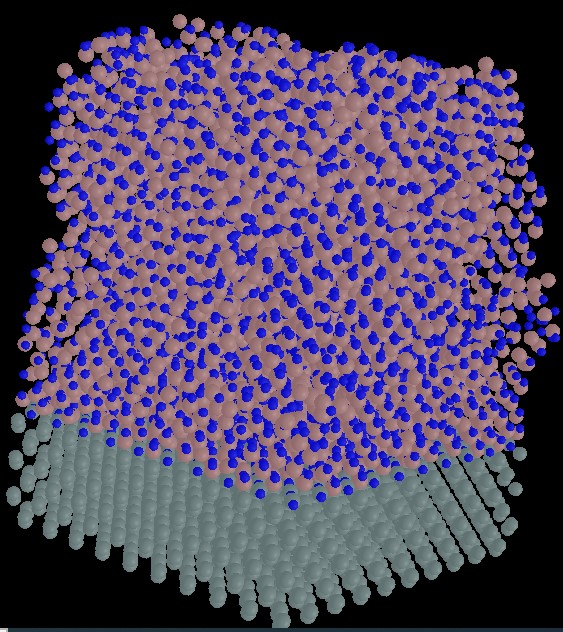TNL-MBE simulator, the process conditions are set by one or more molecular beams from effusion cells directed at a substrate. An effusion cell contains a heated crucible with source material that sublimates or evaporates to form a molecular beam.
Users can choose from various elemental effusion sources, with each crucible heated to produce neutral atomic and molecular beams in an ultra-high vacuum (UHV) environment, preventing interactions among them. The TNL-MBE simulator optimizes the process, allowing precise control over thickness, alloy composition, and impurity levels (doping).
When atoms or molecules reach the substrate, they may become physisorbed (weakly attached) or chemisorbed (strongly bonded). For integration into the lattice, atoms must chemisorb at an epitaxial site and form bulk-like bonds. The incorporation rate indicates how quickly this occurs. Atoms and molecules can migrate on the surface, desorb into the vacuum, or enter the crystal structure, and reactions between adatoms may also occur, impacting larger molecule disintegration.
Vapor Pressure of the effusor
cell element is calculated using crucible temperature and atomic number
Vapor pressure in the range of 10-15 to 10-3 atm,
flexibility to study the IV/IV, V/III and VI/II flux ratio and temperature dependences
of the island characteristics,
Adsoption, hopping and desorption rates from kMC algorthims,
Accurate prediction about growth rate
The surface morphology and defect density as a function of reactor input conditions,
Descending steps in form of Schwoebel-Ehrlich barrier and ascending steps in form of incorporation barrier,
Nearest neighbour (n-n) interaction contribution,

